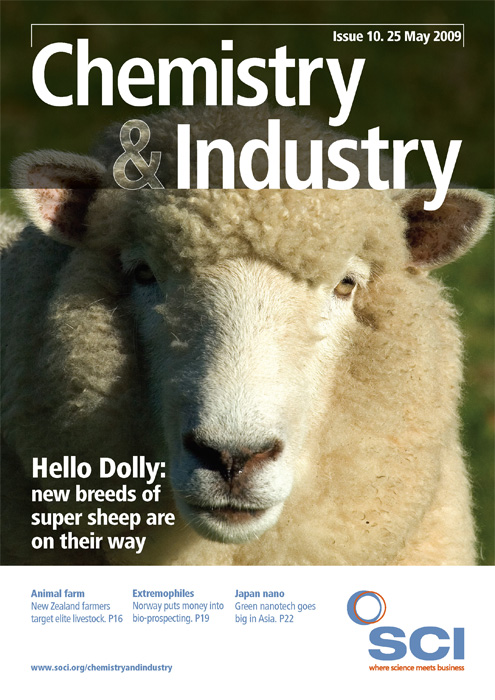The word ’nanotechnology‘ was originally coined by a Japanese scholar, Norio Taniguchi at Tokyo University of Science in 1974. However, Japan’s nanotechnology history dates back to the first observation of zinc nanoparticles by electron diffraction by Ryoji Ueda at Nagoya University in 1948. The country is also home to nanotechnologists including IBM Nobel laureate Leo Ezaki, who proposed semiconductor superlattices, and Sumio Iijima of NEC who discovered carbon nanotubes in 1991.
According to the World Technology Evaluation Center survey in 2005, Japan, the US and EU were on an equal pegging for first generation technologies such as nanoparticles or nanocoatings, but Japan was the leader in second generation technologies such as nanodevices, nanocomposite materials and measurement or analysis. M.C. Rocco, writing in the Journal of Nanoparticle Research, said that Japan leads these three countries in the fields of medical R&D like drug delivery systems or biodevices and constructing structures for three dimensional transistors and amplifiers. However, a report by Japan Science and Technology Agency (JST) in 2008 noted that the rate of growth of technological improvement in China or Korea is bigger than Japan, and warned these two countries might surpass Japan in the near future.
Despite the Japanese government’s stated commitment to strengthening nanotechnology (see Box), this is not reflected in the budget, which has little changed since 2001. The US, EU and Germany, by contrast, are increasing their nanotech budgets significantly. As a result, Japan’s ¥80bn (E0.6bn) budget is now less than half of that of the US‘s ¥180bn for 2008. The Japanese Ministry of Education, Culture, Sports, Science and Technology (MEXT) appropriated ¥36bn of this in FY 2008, and is planning to earmark ¥35bn for FY 2009.
In 2006, the Nomura Research Institute estimated that the domestic market for nanotechnology would grow to ¥6 trillion by 2010 and ¥23 trillion by 2015, and tipped electronic devices as one area for certain growth. A separate survey by the Japanese Ministry of Economy, Trade and Industries (METI) in 2008, meanwhile, estimated that the domestic market would grow to ¥13 trillion by 2020. Nearly 600 nanotech and related companies operated in Japan in 2004, according to a survey by the New Energy and Industrial Technology Development Organisation (NEDO). Of these, 60% have a capitalisation of less than ¥1m and only 8% of more than ¥10m.
Green nanotechnology
In February, Tokyo was host to the Nano Tech 2009 International Nanotechnology Exhibition & Conference, the world’s largest nanotechnology exposition. Organised around the theme of ‘Green Nanotechnology’, the event attracted 47,000 people and showcased nanotechnologies in the areas of solar batteries, CO2 reduction and water or soil purification. Among some of the Nano Tech award winners, Fujifilm exhibited a photo film claimed as having ‘the world’s best transparency and vapour barrier function’. Fujitsu introduced examples of nanocarbon materials applicable to semiconductors, such as CNT transistors, CNT wires or CNT/graphene composites. The National Institute of Agrobiological Sciences reported manufacturing nanofibres by using genetically modified silk worms. It used the technique to produce the fluorescent coloured silk thread by fusing fibroin protein and green fluorescent protein.
Toda Kogyo won the Green Nanotechnology award for its functional materials using nanoparticles to clean up polluted soil and water. However, the Nano Tech Award 2009 went to Mitsubishi, for its activities as a general trading company. It showcased its Mitsubishi Motors’ electric vehicle ‘i MiEV’ and introduced the ‘RE-EV project’ in which, in collaboration with the Tokyo Institute of Technology, the company plans to harness renewable energy both to generate power and to charge the battery of electric vehicle.
During a symposium on green nanotechnology, NEC discussed progress to produce bioplastic using fibres from the plant kenaf – a Hibiscus species cultivated in India, Bangladesh and Africa – in order to avoid competition with food crops. Its kenaf-based bioplastic is claimed to show heatresistance and non-combustibility. It is a fine shape memory material that could be applied to wearable products such as a wristband mobile phone. Its elasticity was much improved by using a highly functional nano filler.
‘The expectations of green nanotechnology is greatly increasing to solve the energy crisis and environmental issues all over the world,’ commented Eiichi Maruyama, the vice chairman of Nano Tech 2009 and also the special advisor of RIKEN Intellectual Property Center. ‘Due to the economic crisis, it would be better for private enterprises to focus on basic research for Green Nanotechnology for future development once the economy gets better.’
Simultaneously with Nano Tech 2009, the Japan Nano 2009 conference was themed ’Nanotechnology for Energy and Environment’. Work featured included research by Kazunari Domen of the University of Tokyo that uses artificial photosynthesis to produce H2 from water via the catalyst (GaxZn1-x)(NxO1-x). Teruo Kishi, the president of meeting sponsor NIMS, commented that: ‘The main issues in Japanese nanotechnology innovation are to promote growing up human resources and networking both domestically and internationally. Also, Japan is good at developing each element technology, but not at technology transfer. We need to organise the system to conquer the problem.’
Saeko Okada is a freelance writer based in Tokyo, Japan.





